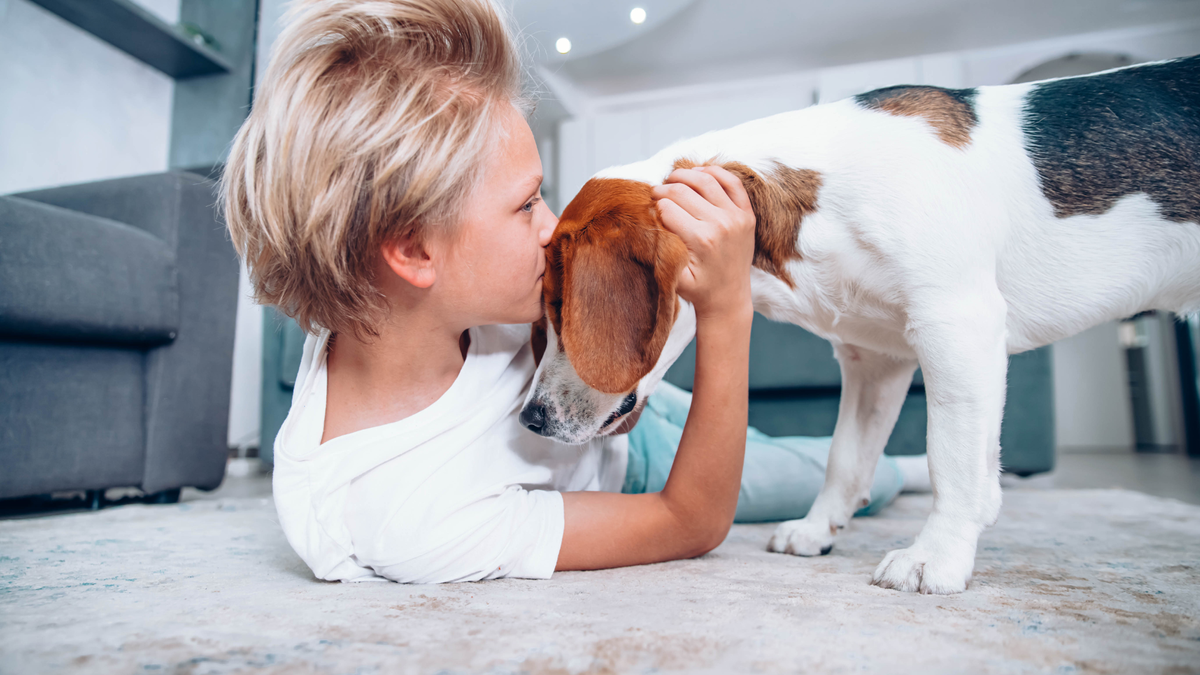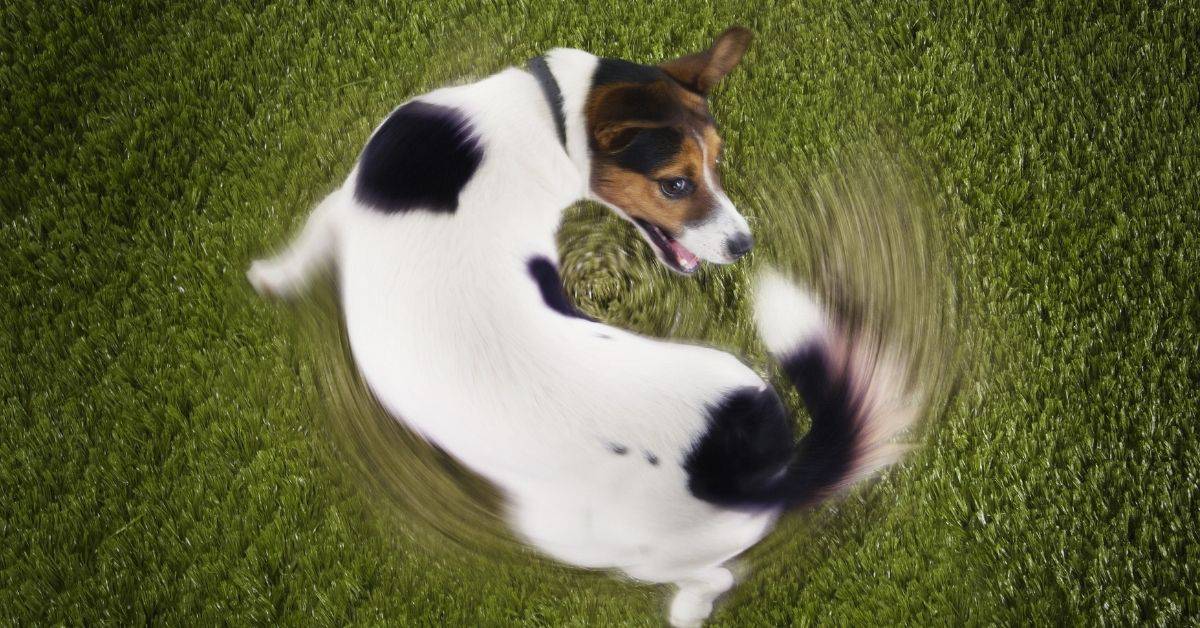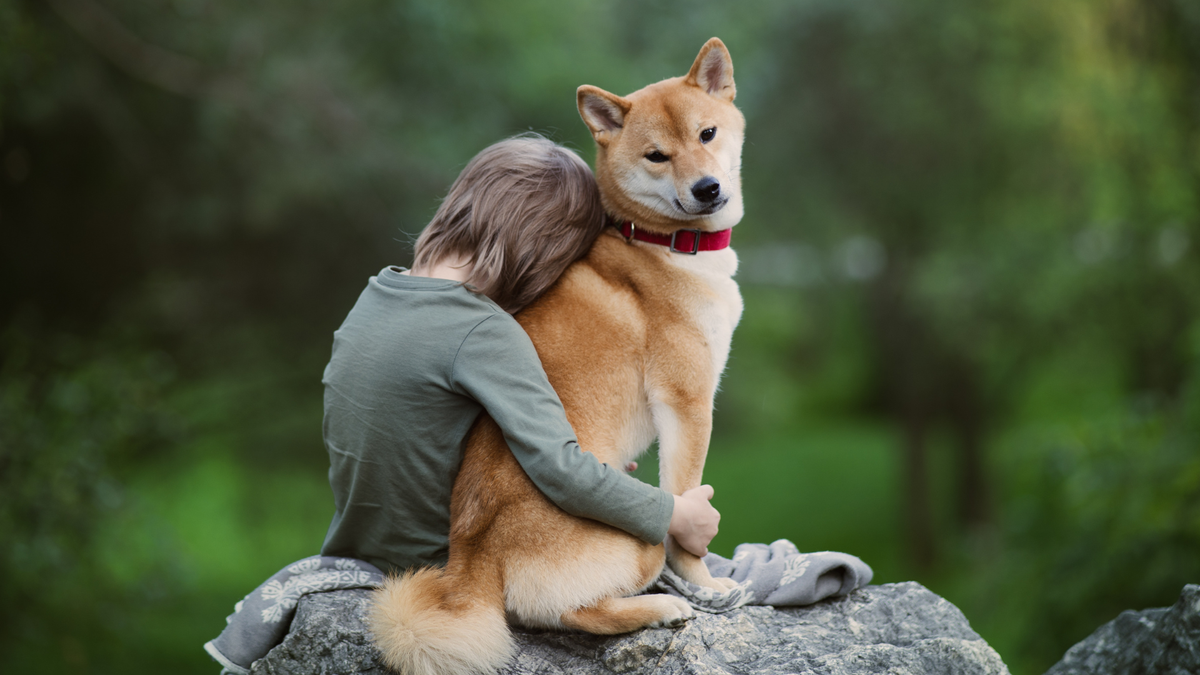Have you ever set down a perfectly good bowl of dog food for your furry friend, only to watch them knock half of it onto the floor? If you’re nodding your head, you’re not alone. Many dog owners have pondered this canine quirk, often while sweeping up the scattered food.
Dogs and Their Ancestral Instincts
Long before they were our cuddly couch companions, dogs were wild animals, fending for themselves. Canine food habits evolved over thousands of years, based on survival needs. This behavior is often driven by pack mentality, where dogs instinctively move food to avoid competition.
For instance, wild canines, like wolves, would often take food away from the main kill site to eat in a safer location. This allowed them to avoid aggressive pack mates or potential predators.

Picky Eaters or Just Tactile Beings? Understanding Eating Habits
Ever notice how some dogs like to spread their food around before eating? This could be due to a heightened sense of touch.
Some experts believe that dogs and tactile eating go hand-in-hand. They enjoy feeling their food with their paws and mouth, akin to how humans might enjoy the act of cooking and preparing a meal. This behavior is similar to how some dogs eat their food away from the bowl to feel more comfortable.
Imagine being served a plate of spaghetti and meatballs but not being able to twirl the spaghetti around your fork. Dogs have a similar experience. By putting food on the floor, they get to ‘interact’ with their dinner a little more intimately.
Dealing with Discomfort
Bowl vs. floor feeding isn’t just about instincts and play. Sometimes, it’s about pure comfort and the design of the dog's bowl. Large dogs, or those with certain medical conditions, might find it uncomfortable to eat from a bowl. Bowls can be too deep, too high, or too narrow.
When Food Guarding Becomes an Issue
Then there’s the matter of food guarding. It’s another instinctual behavior, especially common in dogs that have experienced scarcity or competition over food. This behavior is especially common in households with more than one dog, where competition for food can be intense.
By taking food out of the bowl and placing it on the floor, a dog might feel like they’re controlling their environment better. It’s a little like how some humans prefer to eat with their back against a wall in a restaurant - it’s all about feeling secure.
Other Considerations and Adjustments
Now that we’ve dived deep into the “why” of this intriguing dog behavior, let’s consider the “what next.” Should you let your dog continue this floor-feeding ritual, or is it time for a change? Establishing a consistent feeding time can help mitigate some of these behaviors.
The Health and Hygiene Factor in Dog Food
One concern dog owners might have is the hygiene of the food bowl and floor feeding. If your dog is dropping wet food or treats onto carpeted areas, it can lead to stains or attract pests. Moreover, eating directly off the floor might expose your dog to harmful bacteria.
My friend Jake had this exact problem with his beagle, Max. Max would carry his food to the most random spots in the house. One day, Jake found kibble beneath his pillow! While it made for a good laugh, it also highlighted a potential problem.
To combat this, Jake decided to establish a designated eating area for Max, using a large tray. This way, Max could still indulge in his floor-feeding habit, but in a controlled, clean environment.
The Power of the Right Bowl
Do you recall our discussion about how some dogs might experience discomfort with certain bowls? It’s prudent to select a bowl tailored to your dog’s specific size and requirements.
For flat-faced breeds, there are broad, shallow dishes, while elevated feeders are designed for taller dogs or those with joint problems. There are even bowls that incorporate maze-like designs to moderate the pace of quick eaters and stimulate their minds.
After exploring various alternatives, many dog owners have found that elevated feeders can minimize the tendency of dogs to scatter food on the ground, making mealtime a more enjoyable experience. Ensuring your dog gets just the right amount of food can also help reduce the tendency to scatter food.
Engaging in Mealtime Activities During Feeding Time
For dogs that scatter food due to the tactile pleasure or as a form of play, consider introducing mealtime toys or puzzles. These can provide the engagement they seek without making a mess. Dogs naturally long for companionship, which can make them seek out their owners during mealtime.
Toys like treat-dispensing balls or puzzle feeders challenge dogs mentally, making mealtime both fun and rewarding. This can be especially helpful for high-energy breeds or younger pups with tons of curiosity.
Behavioral Training: A Path Forward
As endearing or perplexing as this behavior might be, some owners might prefer a more “orderly” eating habit for their canine pals. Enter behavioral training. Consulting a veterinary behavior expert can provide additional strategies for managing this behavior.
Positive Reinforcement is the key. If your dog starts taking food out of the bowl, a gentle “no” followed by a reward when they eat from the bowl can work wonders. But remember, patience is crucial. Gradually, most dogs can be encouraged to change their habits with consistent training.
Consider Lucy, a sprightly Golden Retriever who loved taking each piece of kibble on a tour of the house before eating. Her owner began by placing a delicious treat in the bowl and praising Lucy profusely when she ate directly from it. Over time, the floor became less appealing, and the bowl became the place to be.

Understanding and Empathy: Seeing Through Their Eyes
While behavioral techniques and modifications can address the surface issue, truly understanding your dog requires empathy.
Take a moment to see the world from their perspective. For instance, a new environment, changes in the household, or even a new type of food can make them revert to these instinctual behaviors as a coping mechanism. Even in households with only one dog, these behaviors can manifest due to instinctual drives.
A mature Dachshund, who never spilled his food until the family moved houses. The unfamiliar environment made him insecure. By placing food around the house, he was marking his territory, making the new place feel more like home. Recognizing this, his owners gave him extra comfort and security during the transition, eventually easing his anxiety.
Embracing the Quirkiness: Creating Lasting Memories
There’s a certain charm in the unexpected. The dog behaviors that leave us scratching our heads often become the stories we share at gatherings or reminisce about years later. Dogs might also exhibit different behaviors when they are around other dogs.
Remember, not every behavior requires correction. Sometimes, it’s these quirks that make our pets stand out, shaping their individual personalities and leaving lasting imprints in our hearts.
Take Zoe, for instance. A feisty little terrier with a penchant for theatrics. Every mealtime was a performance. She’d scoop up her food, prance around with it, and then, in an act of sheer drama, drop it piece by piece from the top of the stairs. Her owners, rather than being frustrated, began to look forward to this daily spectacle. They even filmed it, turning Zoe into a minor internet sensation!
When to Seek Expert Advice
While most floor-feeding habits are harmless and rooted in instinct or preference, sudden changes in behavior can sometimes indicate underlying issues.
If your once meticulous eater suddenly starts scattering food, or if they become aggressive when doing so, it might be time to consult a veterinarian or a pet behaviorist. Changes in eating habits can be an early sign of dental issues, digestive problems, or other health concerns.
Moreover, extreme food guarding to the point of aggression can stem from past trauma or heightened anxiety and may require professional intervention to ensure both the dog's and the owner's safety.
Joining the Conversation: Sharing Experiences
In this digital age, dog owners have found solace and support in online communities. Sharing stories, seeking advice, and simply enjoying the camaraderie of fellow pet enthusiasts can be enlightening.
When Jane, a first-time dog owner, was baffled by her pup's floor feeding, she took her questions to an online forum. Not only did she receive a plethora of advice and information, but she also discovered she wasn't alone. The shared laughter, anecdotes, and photos turned what was once a point of concern into a delightful shared experience.
Cherishing Every Moment: The Bigger Picture
At the heart of it all, understanding why dogs put food on the floor from the bowl serves as a gentle reminder of the rich tapestry of life we share with our pets.
Every behavior, every idiosyncrasy is a testament to their individual journey and the evolutionary path that has led them to our sides.
As we navigate the world of pet ownership, challenges and all, it's essential to pause and cherish these moments. To find joy in the unexpected and to celebrate the wonderful, unpredictable adventure that is life with a dog.
In years to come, it won't be the pristine living rooms or spotless floors that we remember, but the trails of kibble, the wagging tails, and the heartwarming chaos that came with understanding and loving our furry companions.
Deepening the Bond: Beyond the Bowl
While the act of scattering food can seem minor, it's often a gateway to understanding the complex, multifaceted beings that dogs truly are. Each action, each choice they make is a culmination of instinct, past experiences, and their current environment.

The Emotional World of Dogs
Our canine companions experience a wide range of emotions, from joy and excitement to anxiety and sadness. A behavior as simple as taking food out of a bowl can be an emotional response.
The Ripple Effect of Understanding
By investing time and effort into understanding our dogs, we inadvertently strengthen our bond with them. This bond ripples out, affecting our interactions with other animals and even fellow humans.
Sarah, after decoding her poodle's quirky eating habits, became more attuned to the non-verbal cues of those around her. She became a better listener, more empathetic, and more patient — not just with animals, but with people too.
Conclusion:
In the journey of understanding our dogs, from their ancestral instincts to current behaviors, every nuance and quirk offers valuable insights. Whether it's floor-feeding habits rooted in ancient traditions or simply seeking comfort, each action tells a story. As we delve deeper into these behaviors, we blend traditional observations with contemporary knowledge, ensuring we address both the safety and emotional needs of our pets. By embracing a holistic approach to dog ownership that combines age-old wisdom with modern insights, we forge bonds with our canine companions that are both profound and enduring.
FAQs
- Why do dogs scatter their food?
- Dogs may scatter food due to ancestral instincts, tactile exploration, bowl discomfort, or food guarding behaviors. This can be traced back to wild canine habits where moving food might have offered safety or a better eating experience.
- How does canine ancestry influence their eating habits?
- Before domestication, wild canines would often take food away from a kill site to eat in a safer location, avoiding competition or predators. This instinctual behavior can manifest in modern dogs as scattering food.
- Are there health reasons dogs might spill food from their bowls?
- Yes. Some dogs might find certain bowls uncomfortable due to their size, depth, or height. Dogs with dental issues, neck pain, or other medical conditions might also spill food to find a more comfortable way to eat.
- How can modern tools, like the FI dog collar, aid in understanding our dogs better?
- The FI dog collar offers real-time tracking and activity data. This helps owners understand their dog's routines, habits, and even emotional states, bridging the gap between instinctual behaviors and modern pet care.
- What solutions exist for dogs that scatter food for tactile pleasure
- Introducing textured feeding mats, puzzle feeders, or treat-dispensing toys can offer dogs the sensory interaction they seek, turning mealtime into a stimulating experience.
- How can I tell if my dog is floor feeding due to food guarding instincts?
- Dogs that are food guarding may show signs of anxiety when others approach their food, might eat rapidly, or could become aggressive. Scattering food can be a way to control their environment and feel more secure.
- What should I do if my dog suddenly starts scattering food?
- First, observe for any changes in their environment or health. If the behavior seems linked to discomfort, consult a veterinarian. For behavioral concerns, consider reaching out to a pet behaviorist.
- How can the FI dog collar community support my dog's eating habits?
- The FI collar connects owners to a broader community where they can share experiences, seek advice, and learn from others. This communal wisdom can offer solutions or insights into specific canine behaviors.
- Do all dogs exhibit the behavior of putting food on the floor?
- No. While many dogs display this behavior due to various reasons discussed earlier, it's not universal. Each dog is unique, and their behaviors are influenced by a combination of genetics, environment, training, and health.
- Is it necessary to correct the behavior of dogs scattering food?
- Not always. If the behavior isn't causing harm and isn't linked to an underlying health issue, it might just be a harmless quirk. However, if it's related to anxiety, aggression, or medical discomfort, addressing the root cause is beneficial.
Want to know more about Why dogs do things?







